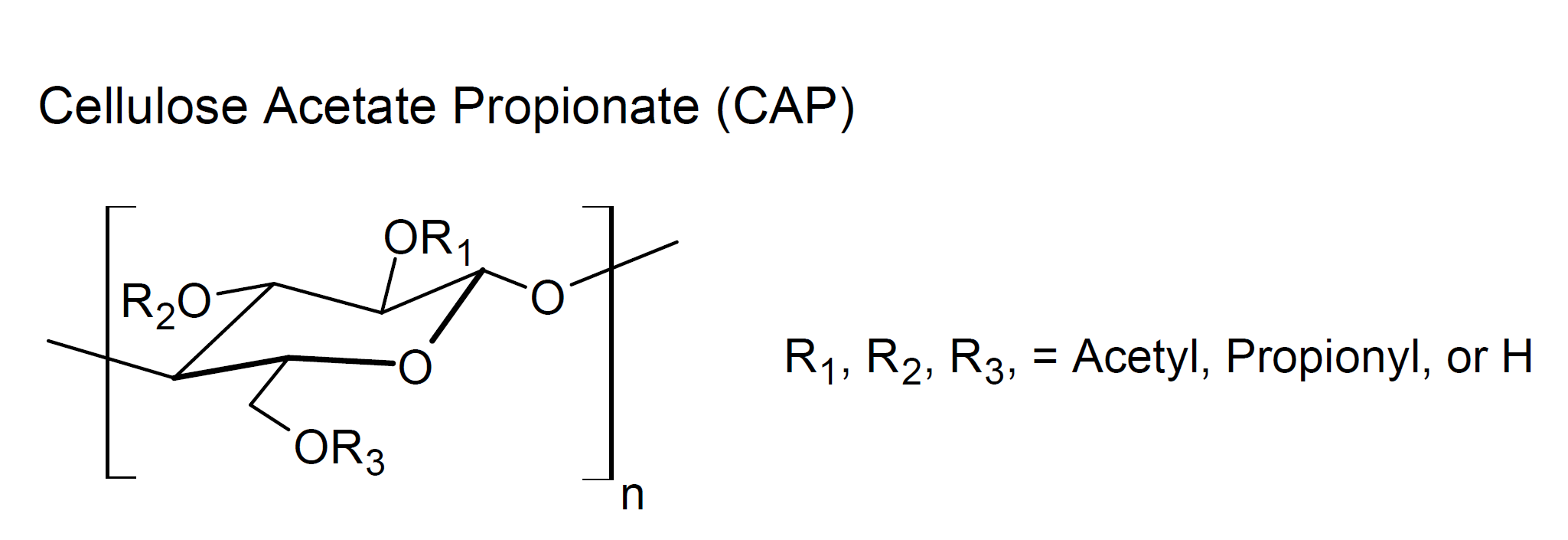Cellulose Acetate Propionate (CAP)
Properties and Applications
Cellulose acetate propionate (CAP) is an important thermoplastic cellulose ester. It is a tough and easy to process thermoplastic of high clarity and little to no odor. The properties of CAP are intermediate between cellulose acetate (CAc) and cellulose acetate butyrate (CAB) resins. Its performance properties are similar to those of cellulose acetate, but it is tougher and more expensive, whereas its solubility and compatibilty is more similar to CAB.

CAP is mainly used as a film former in printing inks, clear overprint varnishes, and nail lacquer topcoats. CAP has good solubility in many ink and coating solvents, and is compatible with many other resins used in these products. It has excellent antiblocking properties, and its grease resistance is superior to that of many other film-formers. In inks and coatings, it often reduces surface defects such as pinholes and craters, and typically improves wetting, adhesion, block resistance and solvent release enabling faster print and coat speeds.